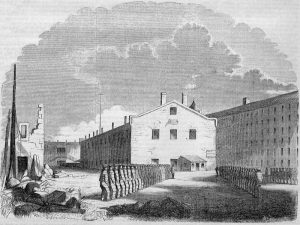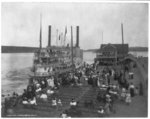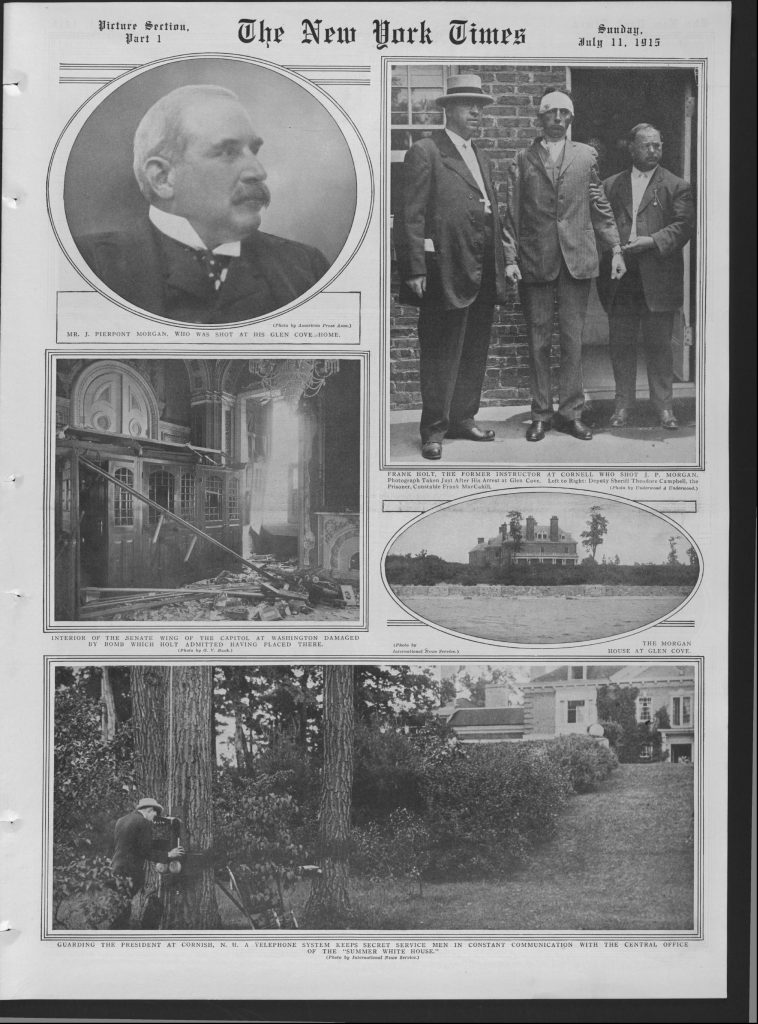From the August 18, 1871 edition of The New-York Times:
SING SING AGAIN.
__________
Daring Escape of Twelve Convicts from the Prison.
__________
They are Carried off in a Tug, by Preconcerted
Arrangement — The Engineer Suspected — One Arrrest Made and
More to Follow.
__________
No incident in connection with the prison history of Sing Sing since its establishment has created such an extraordinary commotion, not alone among the officials of the institution, but among the general community, from the perfection of its plan and the boldness of its execution, as the escape of a dozen convicts from the prison yesterday, in the middle of the noon-day, and in the face of the authorities themselves. It appears that about 11 3/4 [?] o’clock the steam-tug Dean Richmond, Capt. VAN ORDEN, with a canal-boat attached, was seen approaching the Prison dock, and making preparations for landing. There is a regulation of the institution forbidding vessels from coming within a certain distance of the prison grounds, but custom has for years ignored its existence, and boats of all descriptions land at the prison docks. The officer in charge sang out to the Captain of the Dean Richmond to “stand aloof,” but for some purpose, which is not yet distinctly ascertained, the order was disregarded, and the tug was immediately moored to the shore. Ere the officer could attempt to remonstrate, a dozen convicts, who were employed in the dock, rushed into the tug, seized the Captain, and with a purpose, as he states, only too evident, compelled him to run on shore to avoid personal injury. The other hands on the boat, the engineer and a boy, his nephew, instantly detached the moorings from the steamtug, the canal-boat was sent adrift, and swiftly and steadily the vessel steamed from the dock down the river, steering for the opposite shore.
All witnesses to the transaction concur in the statement that the proceedings occupied only a few seconds of time, and ere the astonished official realized the possibility of the fact, his charge had escaped. Hastily discharging his revolver at the retreating vessel, he gave the alarm, and about twenty officers of the prison, with an equal number of citizens, jumped into the boats lying along the piers and started in pursuit.
The tug, however, got far beyond the reach of the officers, and ran on a sand-bar between Nyack and Rockland Lake. Several boats occupied by boys, the sons of fishermen, who at that time were fishing near at hand, were obtained to transport them to the shore, and dividing themselves into three different parties, they plunged into the fastnesses of the surrounding wood. As soon as the full circumstances regarding the affair, were developed at Sing Sing, dispatches were transmitted by telegraph to all the stations at each side of the river, and a number of boats started to intercept the fugitives. The tug was seen lying on the shore and was taken possession of.
THE CONDUCT OP THE ENGINEER.
THOMAS FARRELL, the engineer who aided their escape, was arrested and brought back to Sing Sing. He stated he was utterly bewildered in consequence of the action of the convicts, and that he was compelled to steer out into the river through dread of violence, but this explanation is hardly consistent with his conduct, which appeared entirely voluntary. While the prisoners ran into the cabin in the first instance to avoid the shots of the guard, be remained on deck, directing the engine, and placed his nephew, a mere boy, between himself and the fire, knowing it would make him assist. An examination of the boat revealed a number of facts illustrative of the care and precaution used for the accomplishment of the design. An Immense assortment of citizens’ attire, false whiskers, &c, had been provided, and, in case of resistance, it was determined to resort to the use of firearms. Several revolvers were found in the vessel, and these are now in the hands of the Police authorities at Sing Sing. A determined pursuit was made through the afternoon of yesterday for the capture of the fugitives, but without success, and last evening at 9 1/2 o’clock the officers returned discouraged, but not despairing. …
When I was searching for more information about Sing Sing, I found out that the Senate side of the U.S. Capitol was bombed back in 1915:



